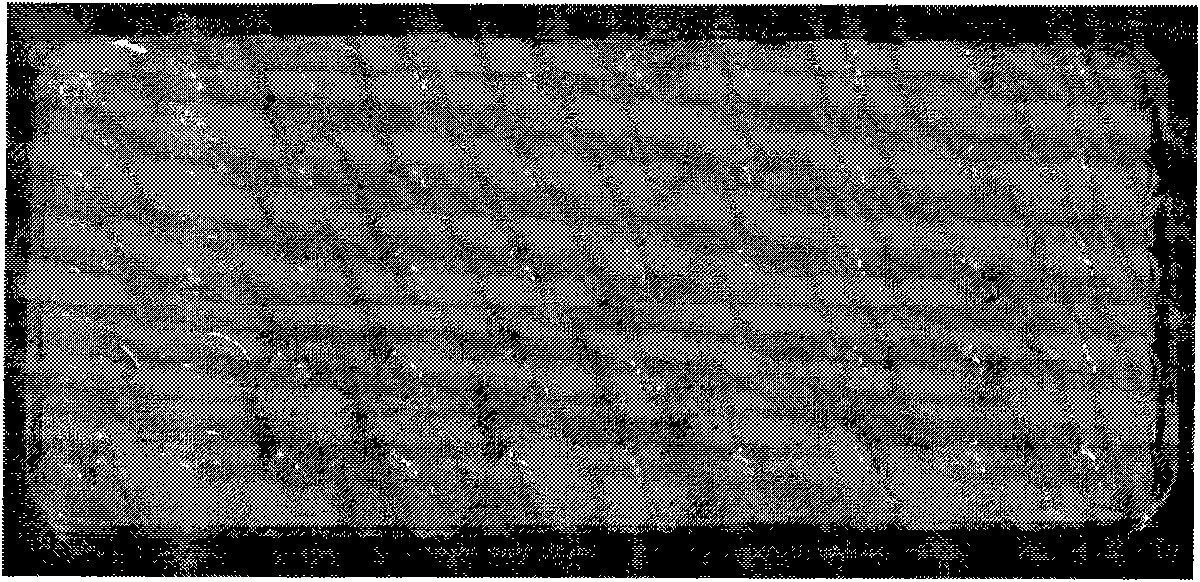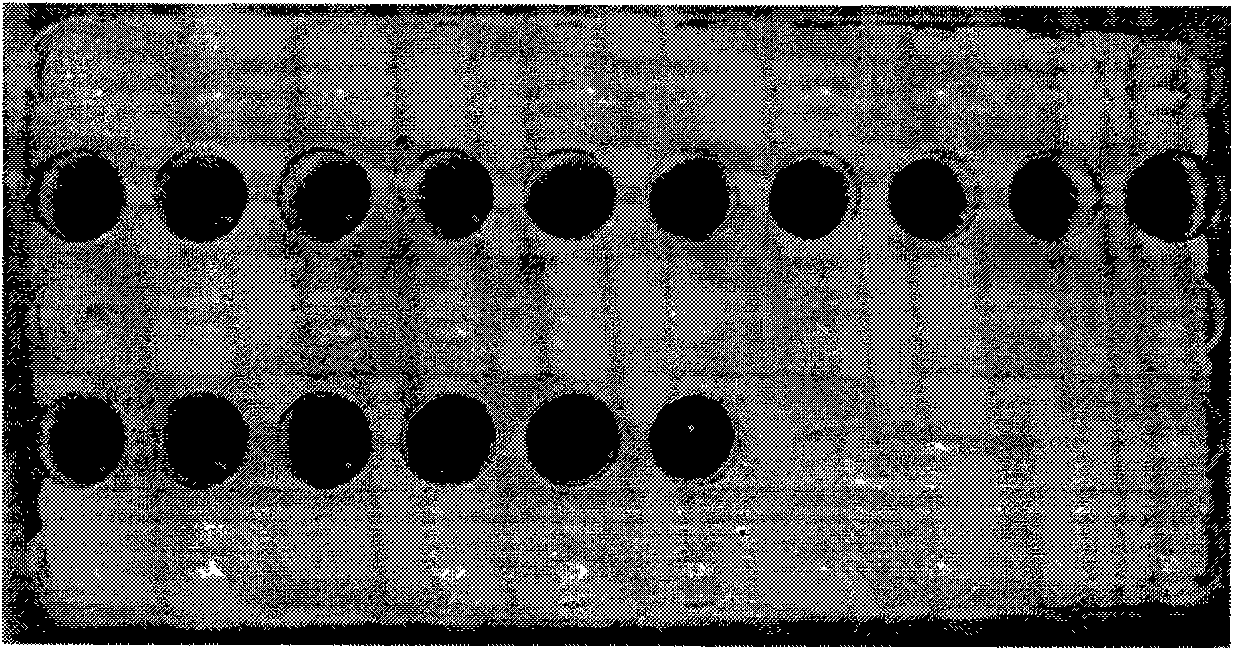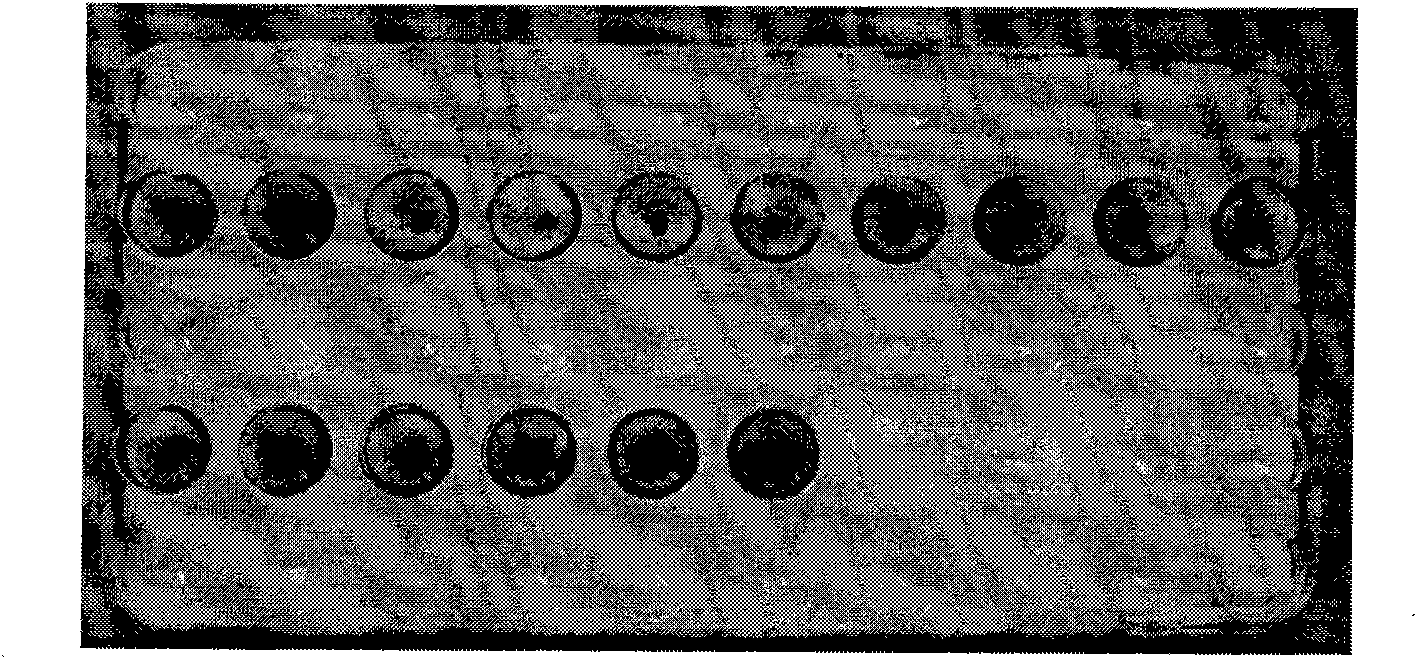Technique for detection by using polybrene microplate before blood transfusion
A detection technology and microplate technology, applied in the field of pre-transfusion detection of polybrene microplate
- Summary
- Abstract
- Description
- Claims
- Application Information
AI Technical Summary
Problems solved by technology
Method used
Image
Examples
Embodiment Construction
[0020] Referring to Fig. 1-4, the present invention first changes the used consumables and supporting facilities by improving the manual polybrene method, and uses self-designed microporous plates ( figure 1 ), no need for test tubes and centrifuges; second, change the concentration and amount of polybrene reagent. Polybrene is a tetramine polymer that can neutralize the negative charge on red blood cells, reduce the Zeta potential, and shorten the distance between cells. At low concentrations, when the distance between red blood cells is shortened, a reversible Non-specific erythrocyte aggregation phenomenon; when the concentration of polybrene increases, erythrocytes directly form non-specific erythrocyte aggregation. When the negative charge on the surface of red blood cells is restored, due to the repulsion of negative charges between red blood cells, the phenomenon of red blood cell aggregation disappears, but the real agglutination caused by red blood cell antigen antib...
PUM
 Login to View More
Login to View More Abstract
Description
Claims
Application Information
 Login to View More
Login to View More - R&D
- Intellectual Property
- Life Sciences
- Materials
- Tech Scout
- Unparalleled Data Quality
- Higher Quality Content
- 60% Fewer Hallucinations
Browse by: Latest US Patents, China's latest patents, Technical Efficacy Thesaurus, Application Domain, Technology Topic, Popular Technical Reports.
© 2025 PatSnap. All rights reserved.Legal|Privacy policy|Modern Slavery Act Transparency Statement|Sitemap|About US| Contact US: help@patsnap.com



